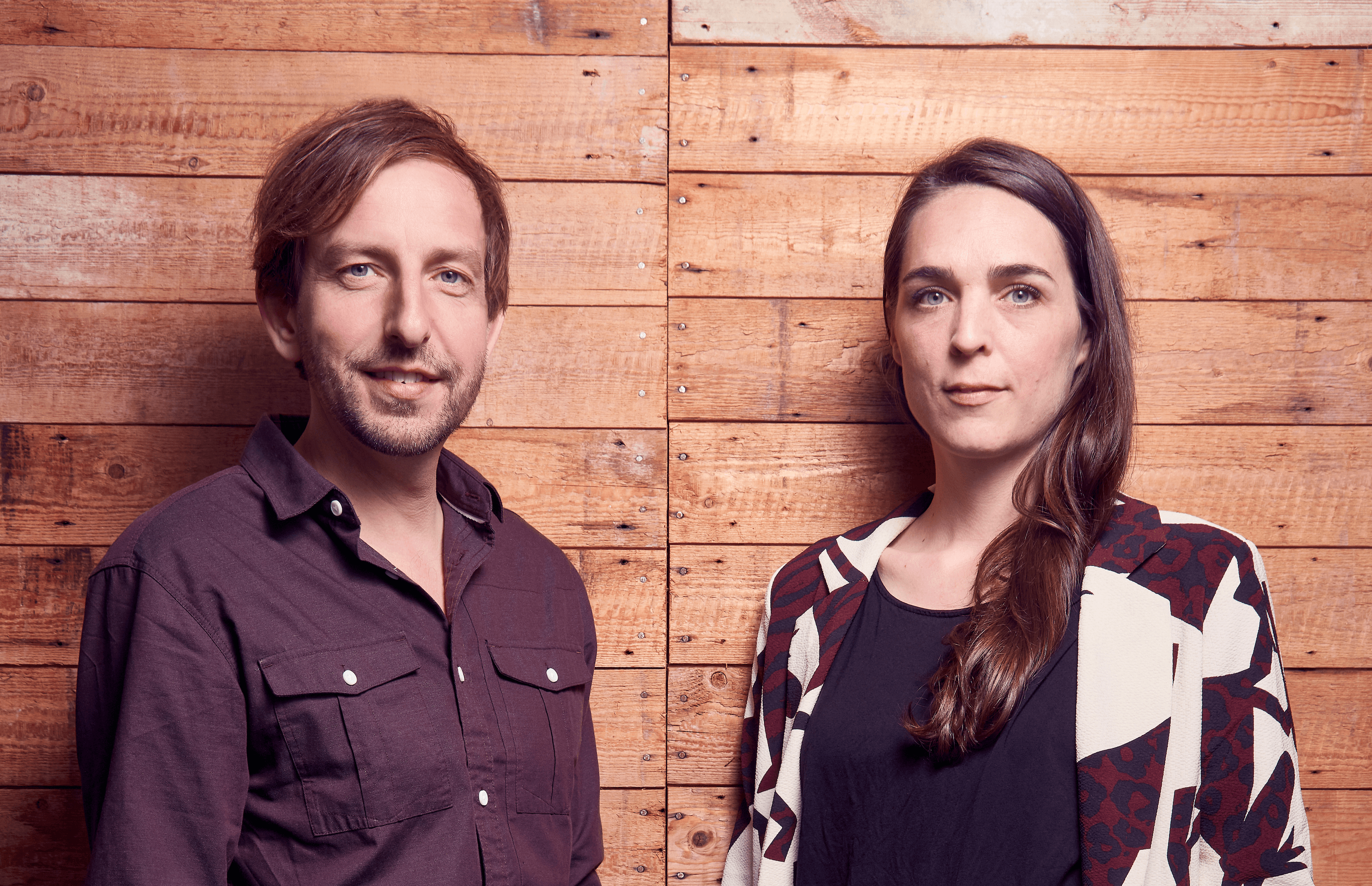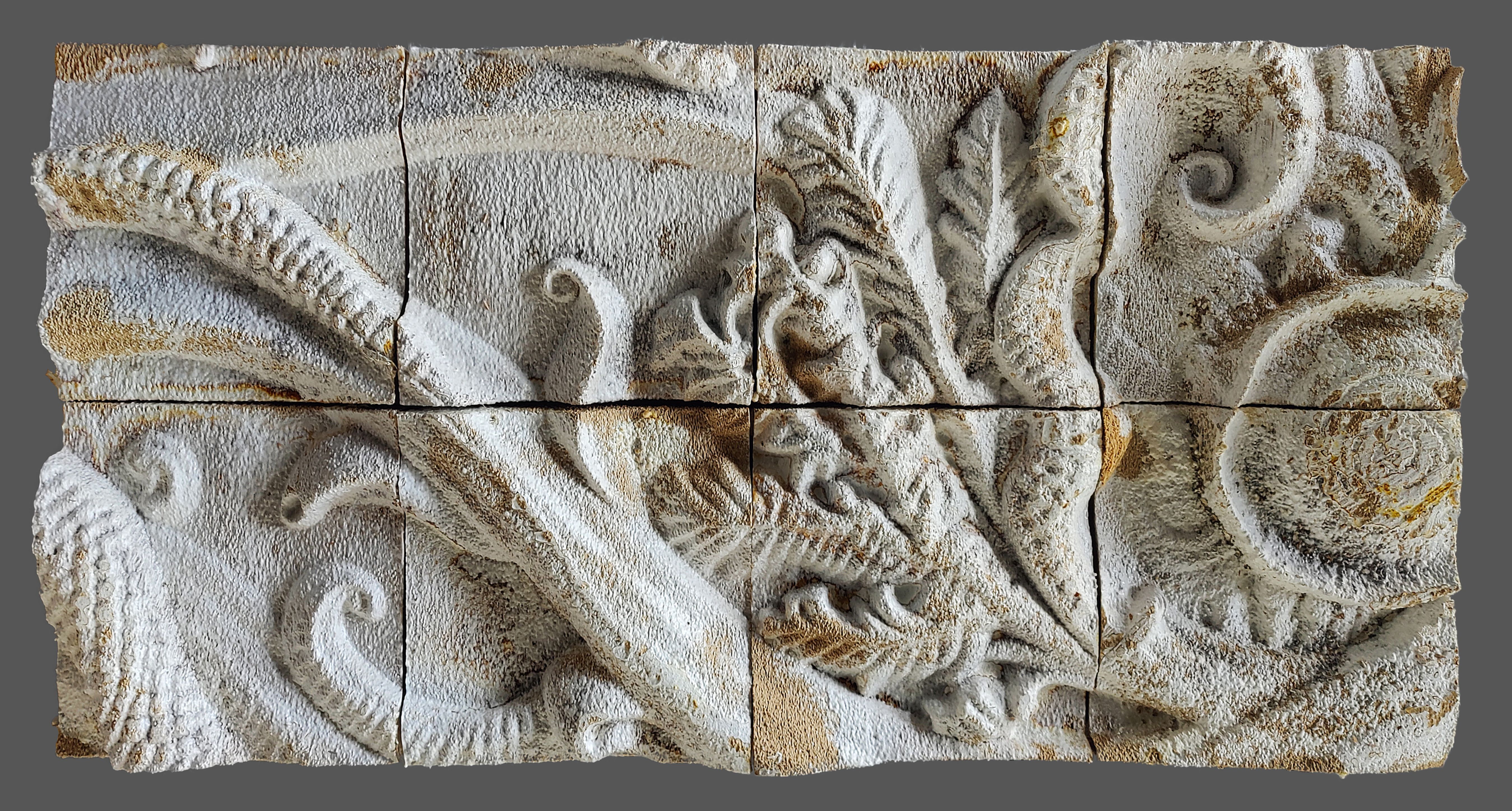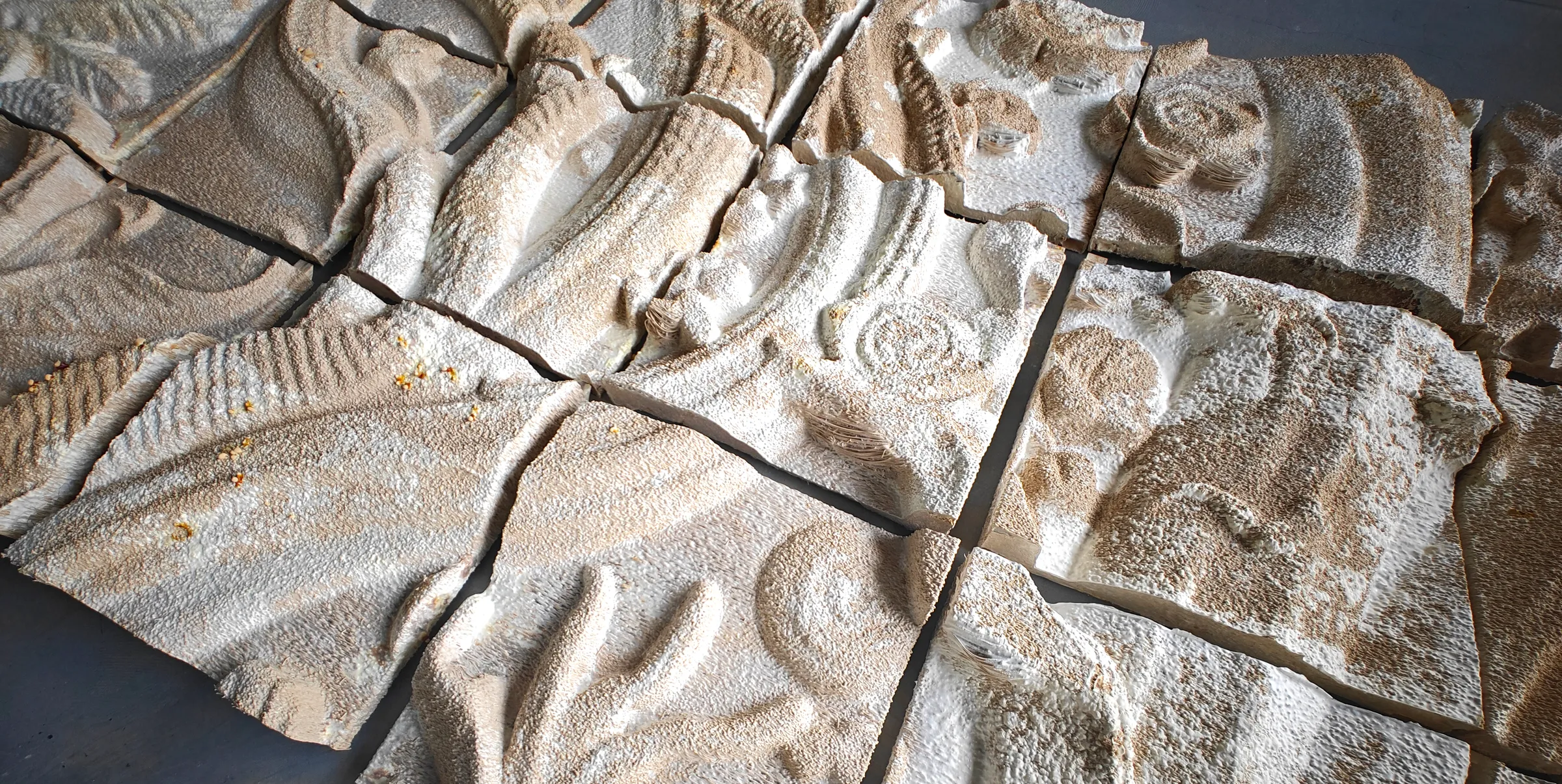What if we no longer manufactured buildings and furniture, but let them grew instead? That is exact what designers Eric Klarenbeek and Maartje Dros are doing. They work with living materials such as algae, seaweed, and fungi, combining them with robotics, AI, and more than 20 years of craftsmanship.
This is not about loose experiments or tests, but about serious and daring alternatives to the way we live and dwell.
The core idea is simple: let life participate. Grow buildings and objects instead of fabricating them. That may sound messy, but in practice it turns out to be more resilient and sustainable than our current mainstream production methods. Polyspace and Growing Facades show us how this poly cultural future, as they call it, could look, and that it starts today.

A façade you can grow
Under the label Wierwaar, Klarenbeek & Dros translate their approach to architecture with Growing Facades. Together with the City of Amsterdam, the Amsterdam University of Applied Sciences (HvA), Sensorlab, and Heijmans, they developed biobased, regenerative façade panels. These are not sawed or cast, but grown using 3D printing and controlled cultivation.
The first panels can already be seen at the Innovation Pavilion at the Marineterrein in Amsterdam. HvA and Sensorlab are monitoring how the material behaves in wind and weather. The façade also functions as a traveling exhibition, so that cultural and museum partners can join the conversation about the future of building.

From product to ecosystem
Polyspace is the research hub. Here, design shifts from a “stand-alone” object to a living system. The structures they develop are bio-inclusive: they allow life in, and even stimulate it. Objects are never truly “finished,” but move through phases of growth, use, and regrowth, responding to their environment. One guiding question remains central throughout: what does this material need in order to work?
A new culture
Our economy runs on monocultures: one crop, one production line. Efficient and predictable, but also fragile, and harmful to biodiversity. Polyspace therefore explores the polyculture, in which multiple species collaborate.
This is not without friction. Monocultures offer certainty in terms of repeatability and investments, while polycultures are more complex and demand new ways of measuring and standardizing. It is precisely within this tension that Polyspace positions itself, through design research: from prototype to pilot, from outdoor testing to building practice, always supported by sensors and monitoring. In this way, a living material gradually grows into living infrastructure.

Next Nature Conference 2025
Klarenbeek & Dros have been working on this for years. Their work is now included in the collections of prominent institutions including the Centre Pompidou, MoMA, Cooper Hewitt, London Design Museum, the Stedelijk Museum, and Boijmans Van Beuningen. Recent results can be seen at the Van Abbemuseum, Kazerne during DDW, OMM Art Eskisehir, Stedelijk Museum Amsterdam, and DHUB Barcelona.
On October 24, Klarenbeek & Dros will be at the Next Nature Museum in Eindhoven to talk about their work during the Next Nature Conference 2025. This is an opportunity to experience where this important field is evolving.


Comments (0)
Share your thoughts and join the technology debate!
No comments yet
Be the first to share your thoughts!